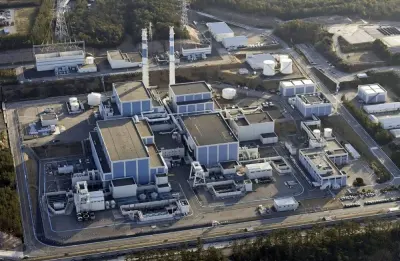Dear Sir,
A few years ago, several Italian scientists were sentenced to jail (though later cleared by an appeals court) for not being able to predict an earthquake that struck their country. Who will they blame for the latest deadly earthquake?
Most earthquakes result from plate tectonics, the continuous movement of immense plates of land along the earth’s surface. Scientists know where these fault lines are and have a rough idea where earthquakes are most likely to happen. But they cannot predict with certainty when a large quake will occur.
Still scientists have had some degree of success in forecasting quakes. The 1994 Northridge earthquake in the United States, for instance, was predicted by ultra-long wave radio anomalies.
The Demeter satellite has recently detected night-time ion increases over earthquake epicentres before they happen within 14 days. Infrared detection of fault heating has been used to detect specific faults under increasing stress that could break within seven to 30 days.
In June of 2003, a team of scientists predicted an earthquake of magnitude 6.4 or higher would strike within nine months in a 310-mile region of central California whose southern part includes San Simeon.
In July of 2003, a team predicted an earthquake in Japan of magnitude 7 or higher by December 28, 2003, in a region that includes Hokkaido. A magnitude 8.1 earthquake struck Hokkaido on September 25, 2003.
But many other major quakes had hit regions in various parts of the world without any advance warning by geologists and seismologists. The truth is that there is no foolproof system to predict quakes accurately.
And the scientific challenge to predict earthquakes is likely to elude us for another century.
Farouk Araie
[email protected]
Challenges for HR professionals
Dear Sir,
KPMG India, in its latest report, has rightly forecast that India’s construction sector is expected to generate 75mn jobs in the next five years and thus eventually emerge as the largest employer in the country.
It further stated that Indian real estate and construction sector is likely to be the third largest globally by 2030, contributing over 15% to Indian GDP.
The urban population will increase by about 40% to over 580mn by 2030 from 420mn in 2015.
Rapid progress needs to be achieved in urban housing, railways, airports and ports besides related infrastructure.
HR professionals need to be abundantly cautious in retaining existing Indian professionals and workers besides realising the challenges that lie ahead of them in hiring suitably competent, skilled and qualified construction personnel from India.
They need to plan and evolve strategies in the larger interest of employers and employees – both present and prospective on a proactive basis.
V Kalyanaraman
[email protected]

letter


